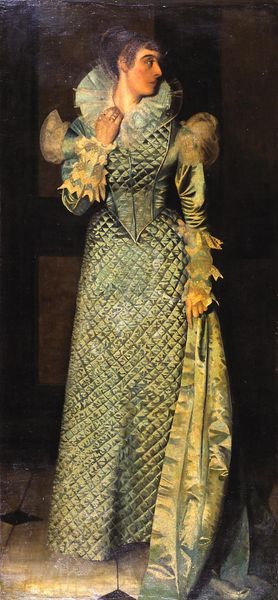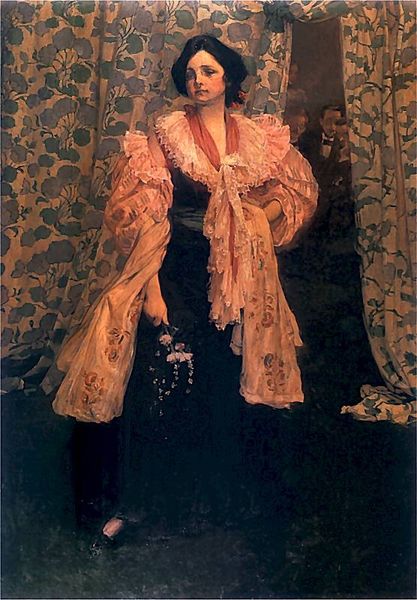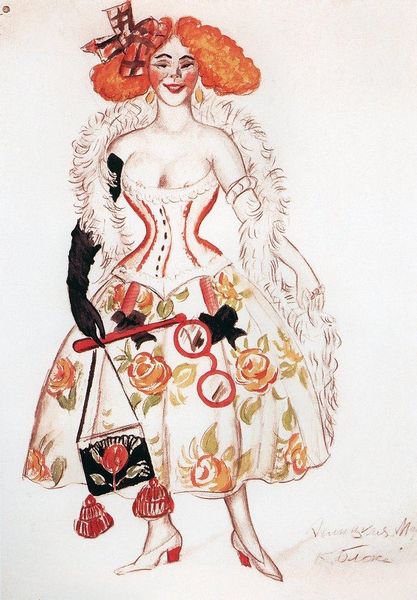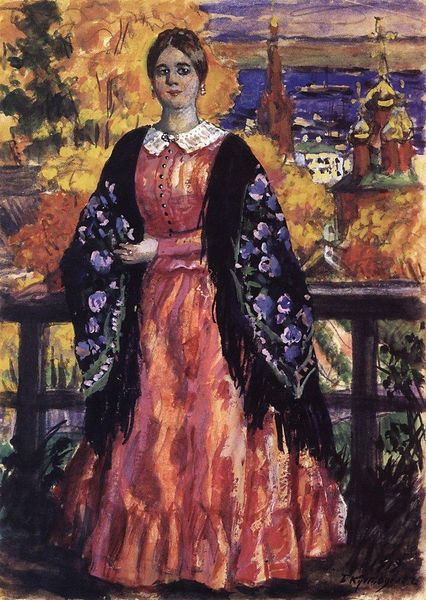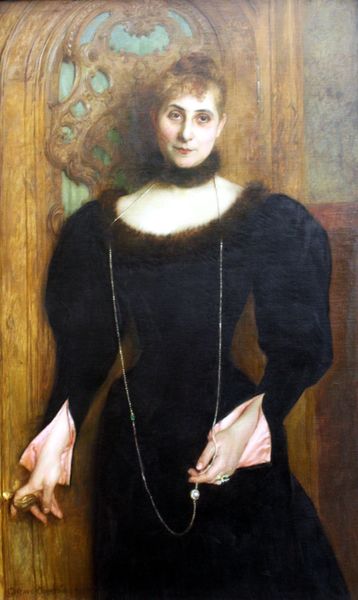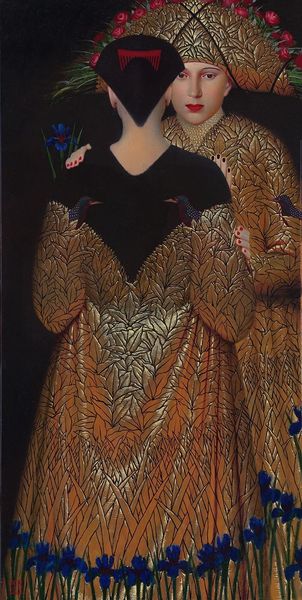
Dimensions: 163 x 97.5 cm
Copyright: Andre Derain,Fair Use
Curator: Standing before us is "Black Scarf," painted by André Derain in 1935 using acrylic paint. What's your first take on this piece? Editor: It has a kind of…rigid formality, doesn't it? There's an attempt at realism, but also a flatness. It gives her this doll-like, almost melancholic air. Curator: Derain was a significant figure, initially a key part of the Fauvist movement known for its intense, expressive colours, but he later shifted towards a more classical and realistic style. This work is categorized within both the realism and portrait styles. Editor: And I think that shift tells us something important. Look at how the black scarf, despite its darkness, seems less about mourning and more about defining a certain social standing, like the hat she carries or even the patterning of the dress itself. Each item is communicating respectability. It's like she's consciously playing a part. Curator: Her costume feels deliberately chosen, almost staged, you could argue. This work, in this later period of Derain's career, shows an interesting interplay between embracing tradition, as academic and politically engaged artists, he wanted art to return to the human, through figure and landscape, thus moving toward the classical values that define the West. Editor: Absolutely. Black, as a color, and scarves specifically, are often linked to transitions, or concealment – widows, spies and stage actors all wear black to imply the presence of what is not being seen. But here, her scarf and hat read like carefully considered affectations of personal style. She performs her wealth and status, as any wealthy woman should be seen by the working class. The black becomes more of a declaration. Curator: Given the period – the mid-1930s, with the rise of nationalistic movements and the looming shadow of war – one wonders if Derain was trying to evoke a certain national pride through this realistic style? Or perhaps he offers a study of society? The question is, how much did his art get tied to representing cultural anxieties? Editor: That is absolutely at play, especially considering the historic shift Derain navigated as an artist. There’s this palpable sense of someone consciously adhering to visual and ideological norms. A compelling work and cultural artifact that’s so evocative and thought-provoking in the cultural role of image.
Comments
No comments
Be the first to comment and join the conversation on the ultimate creative platform.
